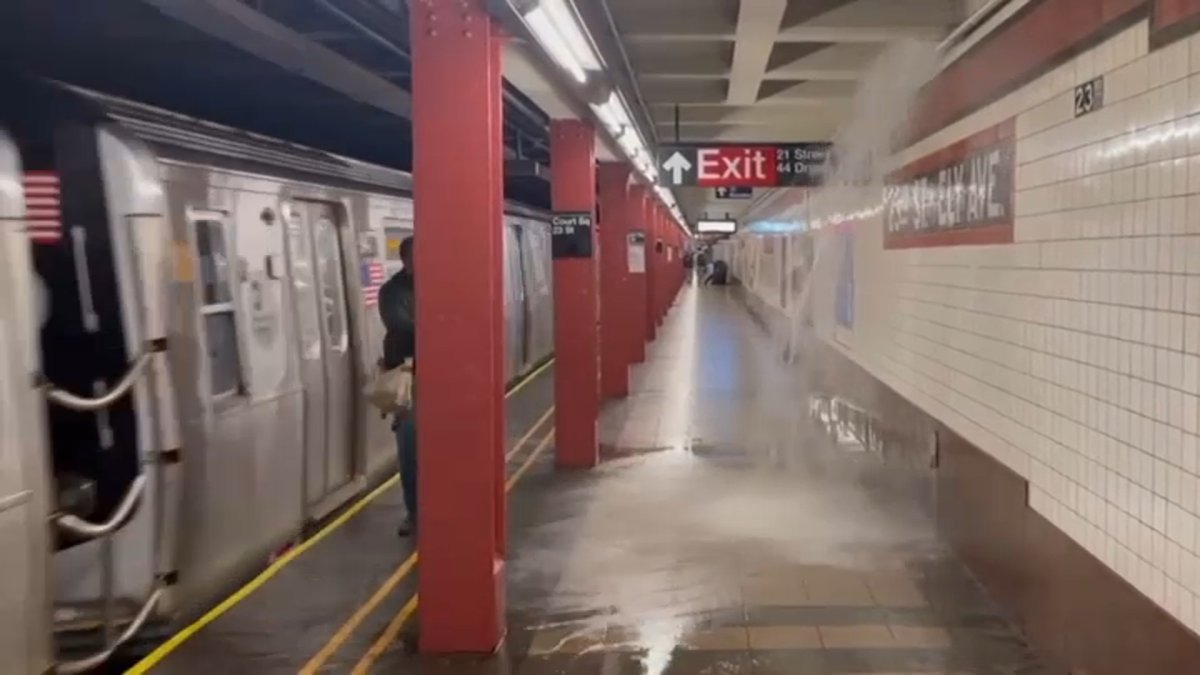What Happened
On July 31, 2025, severe weather conditions led to flash flood warnings being issued across New York City and New Jersey, prompting both states to declare states of emergency. An approaching cold front was expected to bring heavy rainfall, with forecasts predicting between 1 to 3 inches of rain, and localized amounts potentially reaching up to 5 to 7 inches in certain areas. The most intense weather was anticipated to coincide with the afternoon rush hour, raising concerns about transportation disruptions and public safety.
In New York City, the Clearview Expressway in Queens experienced significant flooding, resulting in stranded vehicles and necessitating rescue operations for trapped drivers. Witnesses reported water levels reaching up to 10 feet in some areas, leading to dramatic scenes of individuals sitting atop their cars. Mayor Eric Adams declared a localized state of emergency in response to the flooding, which disrupted normal city operations and raised alarms about the potential for further incidents as the storm progressed.
Key Details
- Rainfall Forecast: The National Weather Service projected rainfall totals of 1 to 3 inches across the tri-state area, with isolated areas possibly receiving 5 to 7 inches.
- Timing: The most severe weather was expected during the afternoon rush hour, a peak time for commuter traffic.
- Emergency Declarations: Both New York City and New Jersey declared states of emergency to facilitate resource allocation and ensure public safety.
- Impact on Transportation: NYC subways typically face operational challenges when rainfall exceeds one inch per hour; the forecast indicated rates could be as high as 3 inches per hour.
- Rescue Operations: Reports indicated that multiple drivers were rescued from vehicles stranded in floodwaters on the Clearview Expressway.
Multiple Perspectives
Officials from both New York and New Jersey emphasized the seriousness of the situation, urging residents to remain indoors and avoid travel unless necessary. Acting Governor of New Jersey, Tahesha Way, highlighted the potential for severe thunderstorms and flash flooding, advising residents to stay informed through local weather updates.
Conversely, some residents expressed frustration over the preparedness and response to the flooding, citing previous incidents of severe weather that had similarly impacted the area. Witnesses on the Clearview Expressway described the flooding as unprecedented, raising concerns about infrastructure resilience in the face of increasingly severe weather events.
Context & Background
Flash floods are a recurring issue in urban environments, particularly in areas with significant impervious surfaces like roads and buildings that prevent water absorption. The tri-state area has experienced a series of severe weather events in recent years, raising questions about climate change and its impact on weather patterns. The declaration of states of emergency is a standard response to such events, allowing for the mobilization of resources and assistance to affected areas.
The National Weather Service and local government agencies have been working to improve flood response strategies, but the rapid onset of severe weather often challenges these efforts. The events of July 31, 2025, serve as a reminder of the vulnerabilities faced by metropolitan areas during extreme weather conditions.
What We Don’t Know Yet
As the situation is still developing, several uncertainties remain. The full extent of the damage caused by the flooding, including impacts on infrastructure and transportation systems, has yet to be assessed. Additionally, it is unclear how the storm will evolve as it moves through the region, and whether further rainfall will exacerbate existing conditions.
Emergency management officials are likely to conduct assessments in the aftermath of the storm to evaluate response effectiveness and identify areas for improvement. The long-term implications of such weather events on urban planning and infrastructure resilience also warrant further examination, particularly in light of changing climate patterns.
Overall, while immediate safety concerns are being addressed, the broader implications of these severe weather events will require ongoing attention and action from both local and state authorities.


